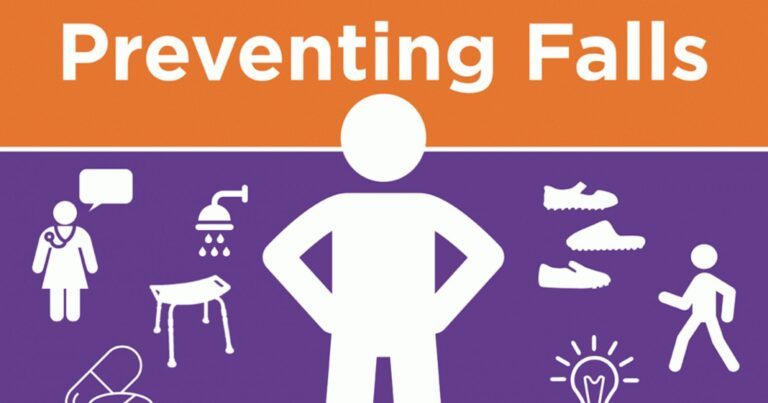Kickstart Your Online Journey
Introduction To Blogging. Starting a blog can be one of the most rewarding hobbies or side hustles you’ll ever embark on. Blogging allows you to share your passion with a wider audience while carving out your niche in the online world. Whether you’re passionate about cooking, technology, travel, or any other topic, there’s a space for everyone.

When I first started blogging, I was amazed at how quickly I could connect with like-minded people. Having a clear focus helps attract readers who share your interests, turning visitors into loyal followers. By consistently producing content, you build credibility and grow your audience.
It’s essential to write about what genuinely excites you. Blogging about your passion keeps you motivated and ensures that your content resonates with readers. Sharing personal experiences and insights can make your blog stand out and keep readers coming back for more.
Millions Now Make Good Money Who Never Thought They Could
Free Starter Program-Start Now
Join over 2.6 million other members and follow the proven Ultra Simple 4 Step Affiliate System used to sell products online every day!
Introduction To Blogging: Setting Up Your Blog

Starting a blog involves making some pivotal decisions about the platform, domain, and design. It’s crucial to have a well-thought-out content strategy that aligns with your goals.
Choosing a Blogging Platform
Picking the right blogging platform is the first step. I recommend platforms like WordPress and Wix for their flexibility and ease of use.
WordPress offers extensive plugins and themes, making it a great choice if you want to customize your site. Wix, on the other hand, provides a more visual approach with drag-and-drop features.
Securing a Domain Name and Hosting
Your domain name should be unique and reflective of your blog topics. It’s the web address where readers will find your content. I suggest using services like Namecheap or GoDaddy to find and purchase your domain.
For hosting, companies like Bluehost and SiteGround are reliable. They offer various plans suitable for beginners and experienced bloggers alike.
Designing Your Blog
Designing your blog involves choosing a theme and customizing it to fit your brand. WordPress and Wix both offer free and premium themes. Look for a design that is responsive, meaning it looks good on both desktop and mobile devices.
Ensure that your design includes easy navigation, a clear header, and well-organized categories to help readers find content easily.
Millions Now Make Good Money Who Never Thought They Could
Free Starter Program-Start Now
Join over 2.6 million other members and follow the proven Ultra Simple 4 Step Affiliate System used to sell products online every day!
Planning Your Content Strategy
A good content strategy is essential for attracting and retaining readers. Start by identifying your blog topics and creating a content calendar. This helps you stay organized and ensures you consistently produce high-quality content.
Include a mix of posts like tutorials, opinion pieces, and interviews to keep your audience engaged. Don’t forget about SEO (Search Engine Optimization) to help your blog rank higher on search engines. Using keywords effectively can make a big difference.
Creating Content

Every blogger wants to create interesting content that attracts readers and keeps them coming back. This includes writing compelling blog posts, using SEO strategies to improve visibility, incorporating multimedia elements, and posting regularly to engage your audience effectively.
Writing Your First Blog Post
When writing your first blog post, it’s important to choose a topic you’re passionate about. This enthusiasm will come through in your writing and engage your readers.
Start with an eye-catching title that makes people want to click. Then, write an introduction that hooks them and provides a summary of what the post will cover. Use headings and subheadings to break up text and make it easier to read.
To make your content more engaging, include personal anecdotes, questions to the reader, and call-to-action statements. Also, review your post for grammar and spelling errors before publishing.
Millions Now Make Good Money Who Never Thought They Could
Free Starter Program-Start Now
Join over 2.6 million other members and follow the proven Ultra Simple 4 Step Affiliate System used to sell products online every day!
Utilizing SEO Best Practices
Using SEO (Search Engine Optimization) effectively is key to getting your blog seen by more people. Start by researching keywords related to your topic and incorporating them naturally into your content, especially in headings and the first paragraph.
Write a compelling meta description, which is a brief snippet that appears under your blog post in search results. It should include your main keyword and entice readers to click.
In addition, ensure your images have alt text with relevant keywords. Alt text helps search engines understand the content of your images. Regularly update your posts with new information to keep them relevant.
Engaging with Multimedia
Adding multimedia to your blog posts can make them more interesting and engaging. Consider including images, videos, infographics, and GIFs to support your text. These elements can break up long sections of text and make your posts visually appealing.
For each image or video, add a caption to explain its relevance. If you use videos, make sure they’re short and to the point, as long videos can lose a reader’s attention.
You can also embed social media posts, such as tweets or Instagram photos, to integrate different platforms and increase engagement. Interactive elements like polls or quizzes can further draw readers into your content.
Maintaining a Consistent Posting Schedule
To keep your readers engaged, it’s critical to maintain a regular posting schedule. Consistency builds trust and anticipation. Decide on how often you can realistically create quality content and stick to that schedule, whether it’s once a week or twice a month.
Use tools like content calendars to plan your posts ahead of time. This can help you manage your time efficiently and ensure you never run out of ideas.
Monitor your analytics to see what types of posts perform best and adjust your strategy accordingly. Regularly engaging your audience with fresh content will help you build a loyal reader base.
Millions Now Make Good Money Who Never Thought They Could
Free Starter Program-Start Now
Join over 2.6 million other members and follow the proven Ultra Simple 4 Step Affiliate System used to sell products online every day!
Growing Your Audience

To grow your blog’s audience, focus on understanding who they are, utilize social media effectively, and develop an engaging email newsletter.
Understanding Your Target Audience
First, identify who you are writing for. Demographics like age, gender, and interests matter. Use tools like Google Analytics to gather data. Look at which posts get the most traffic and why. Feedback from readers can also provide valuable insights. Adjust your content to meet their needs and preferences. When you know your audience well, it becomes easier to create content that resonates with them.
Leveraging Social Media
Social media platforms are powerful tools to promote your blog. Share your posts on multiple platforms like Instagram, Twitter, and Facebook. Engage with your followers by responding to comments and messages. Create eye-catching graphics and captions to grab attention. Collaborate with influencers in your niche to reach a broader audience. Schedule your posts at peak times to maximize visibility.
Developing an Email Newsletter
An email newsletter keeps your audience engaged and drives traffic back to your blog. Use platforms like Mailchimp or Substack to manage your emails. Include valuable content, such as exclusive tips, updates, and personal stories. Make sure to maintain a consistent sending schedule. Encourage users to sign up for your newsletter by offering incentives like free downloads. Keep your emails brief but informative to maintain interest.
Millions Now Make Good Money Who Never Thought They Could
Free Starter Program-Start Now
Join over 2.6 million other members and follow the proven Ultra Simple 4 Step Affiliate System used to sell products online every day!
Monetizing Your Blog

Making money from your blog can be an exciting endeavor. It often involves diversifying your revenue streams to maximize income.
Exploring Affiliate Marketing
Affiliate marketing is one of my favorite ways to monetize a blog. Here, you earn a commission by promoting products or services from other companies. When your readers purchase through your affiliate links, you get a cut.
Successful affiliate marketing requires choosing products relevant to your niche. For example, if your blog focuses on fitness, promoting workout gear or supplements makes sense. Creating honest and detailed reviews can boost your authority and drive sales.
The key is to be transparent. Disclose your affiliate relationships to build trust, which in turn supports better conversion rates.
Offering Products or Services
Selling products or services directly on your blog is another effective money-making strategy. I started with digital products like eBooks and online courses. These low-cost items attracted a wide audience without significant upfront investment.
If you have expertise in a specific area, consider offering consulting services. For example, if your blog covers digital marketing, you could offer SEO consultations. This not only adds value for your readers but also positions you as an industry authority.
Physical products can also be an option, though they come with higher costs and logistical considerations. For instance, a food blog might sell branded kitchen tools.
Generating Ad Revenue
Ad revenue can be a steady income source for many bloggers. Platforms like Google AdSense allow you to display ads on your site, earning money based on impressions or clicks. The more visitors you attract, the higher your potential earnings.
I found it’s crucial to strike a balance with ads. Overloading your site can drive readers away, reducing your rank and authority. Focus on delivering valuable content to keep your audience engaged while generating revenue.
Opt for ad placements that don’t disrupt the user experience. Experiment with different formats such as banner ads, in-text ads, or sponsored posts to see what works best.






